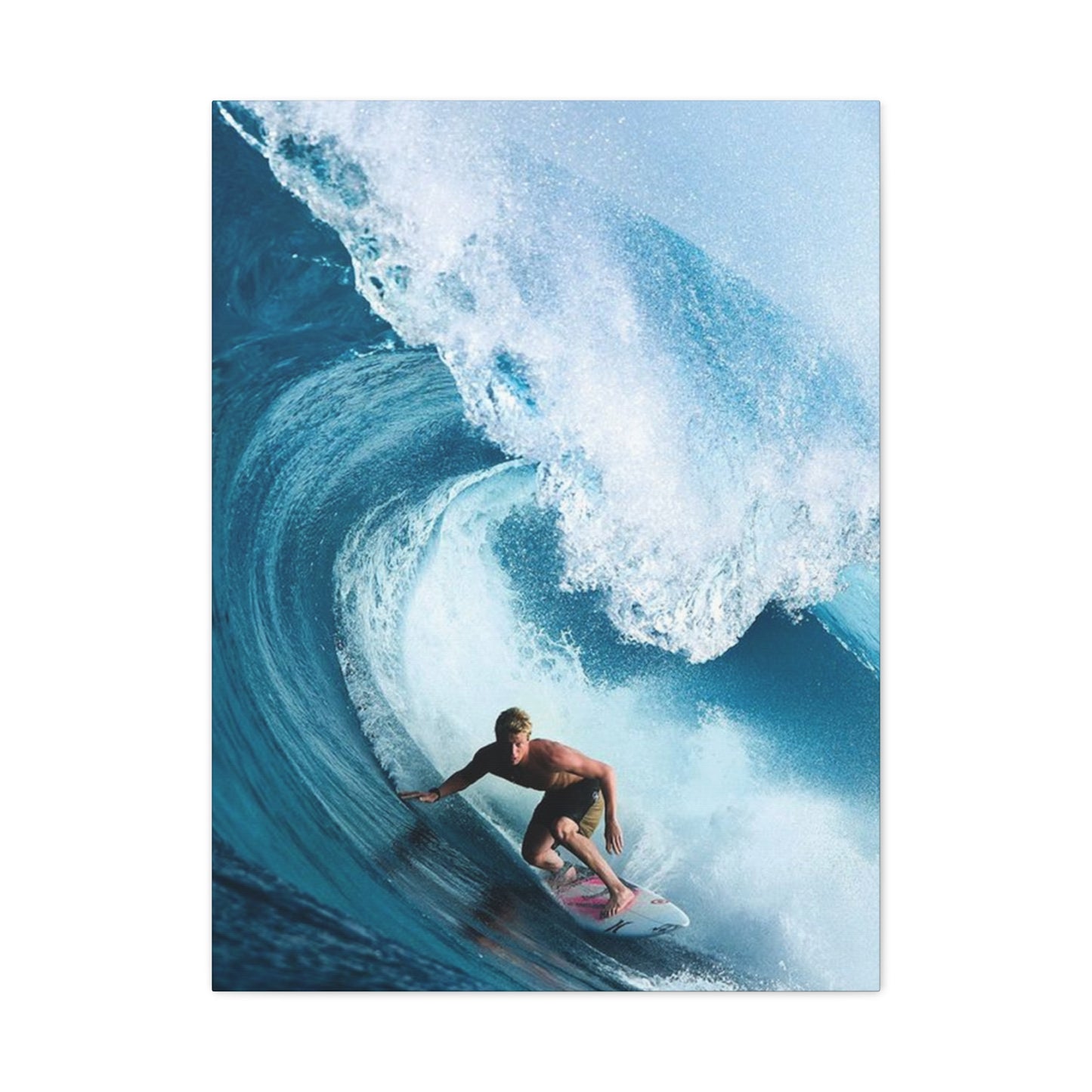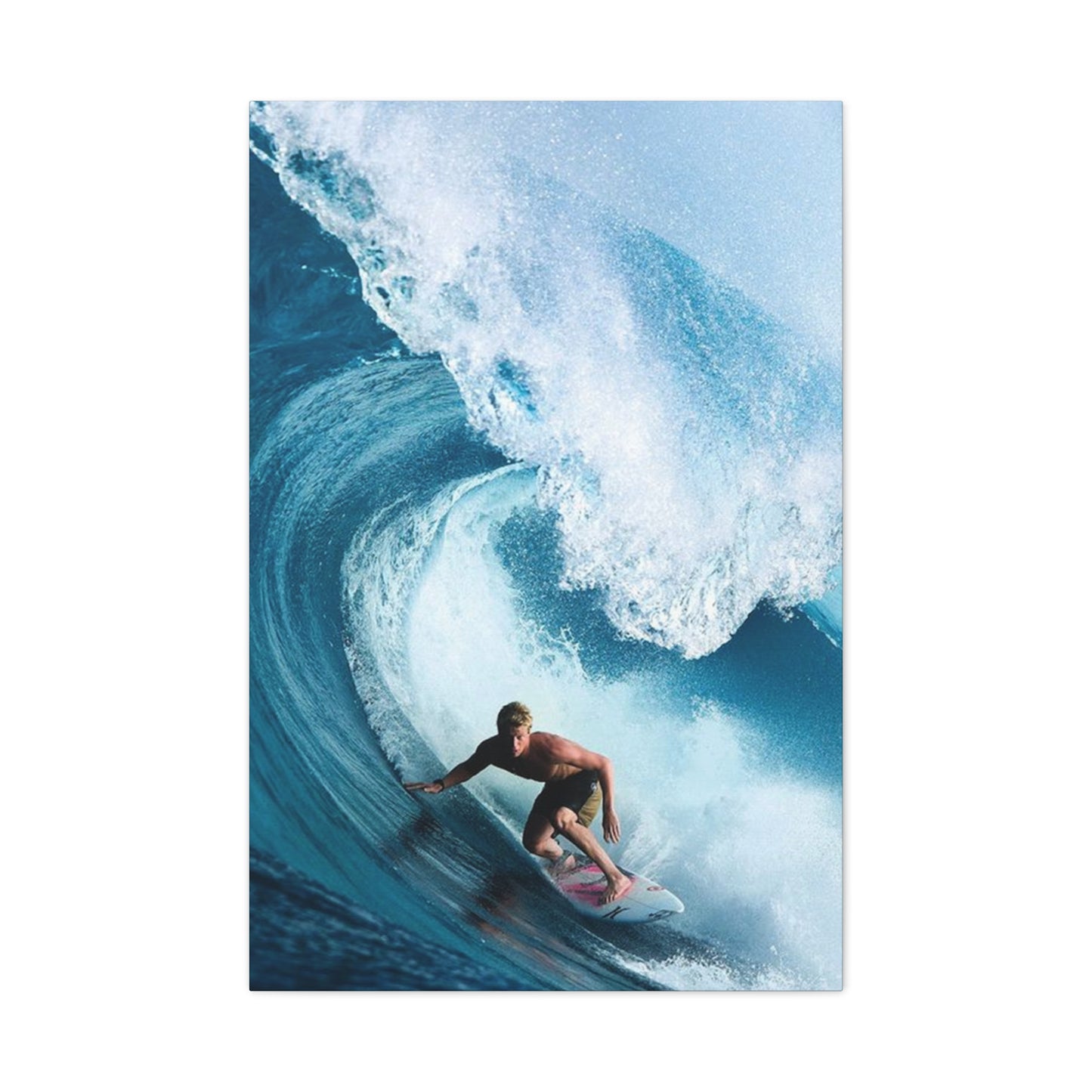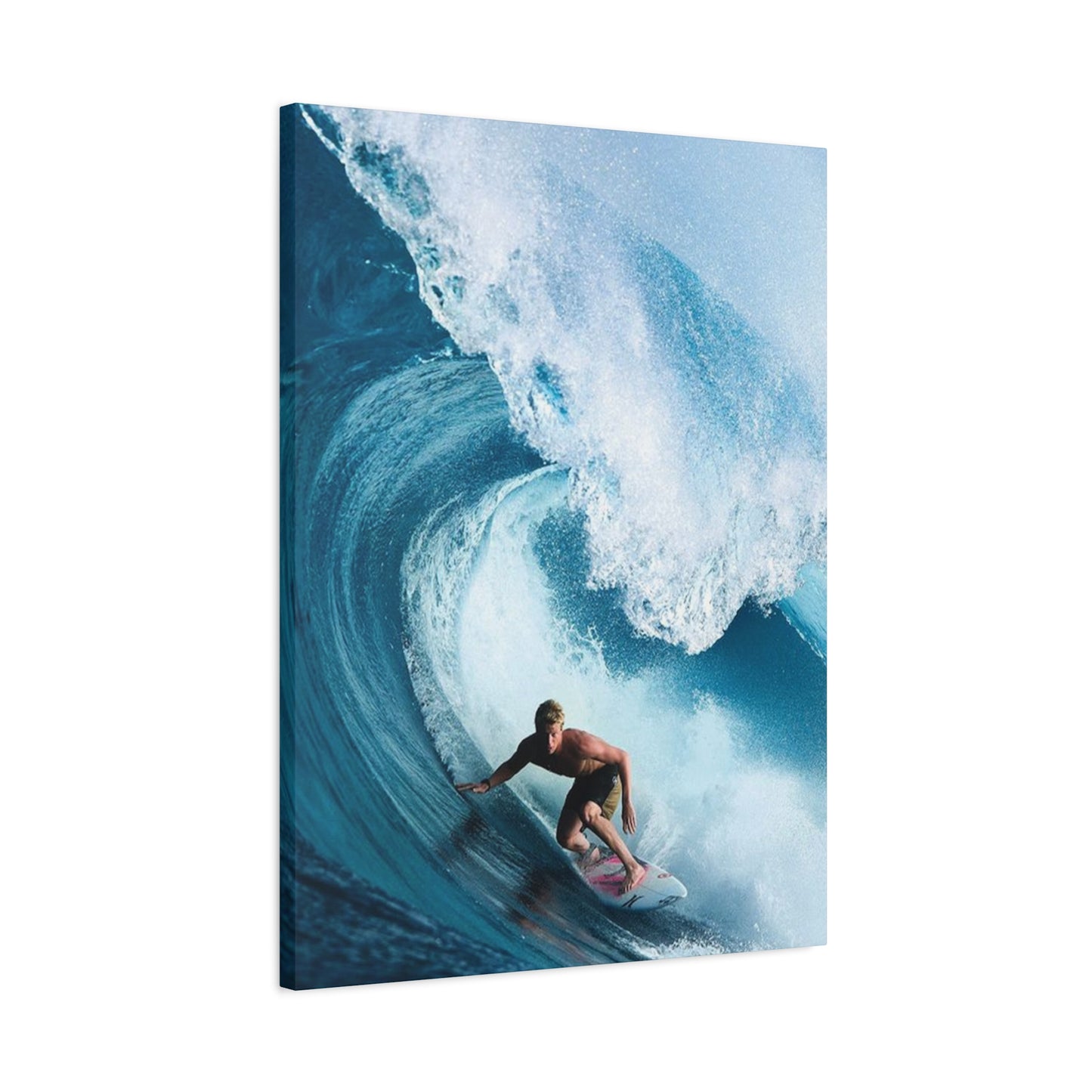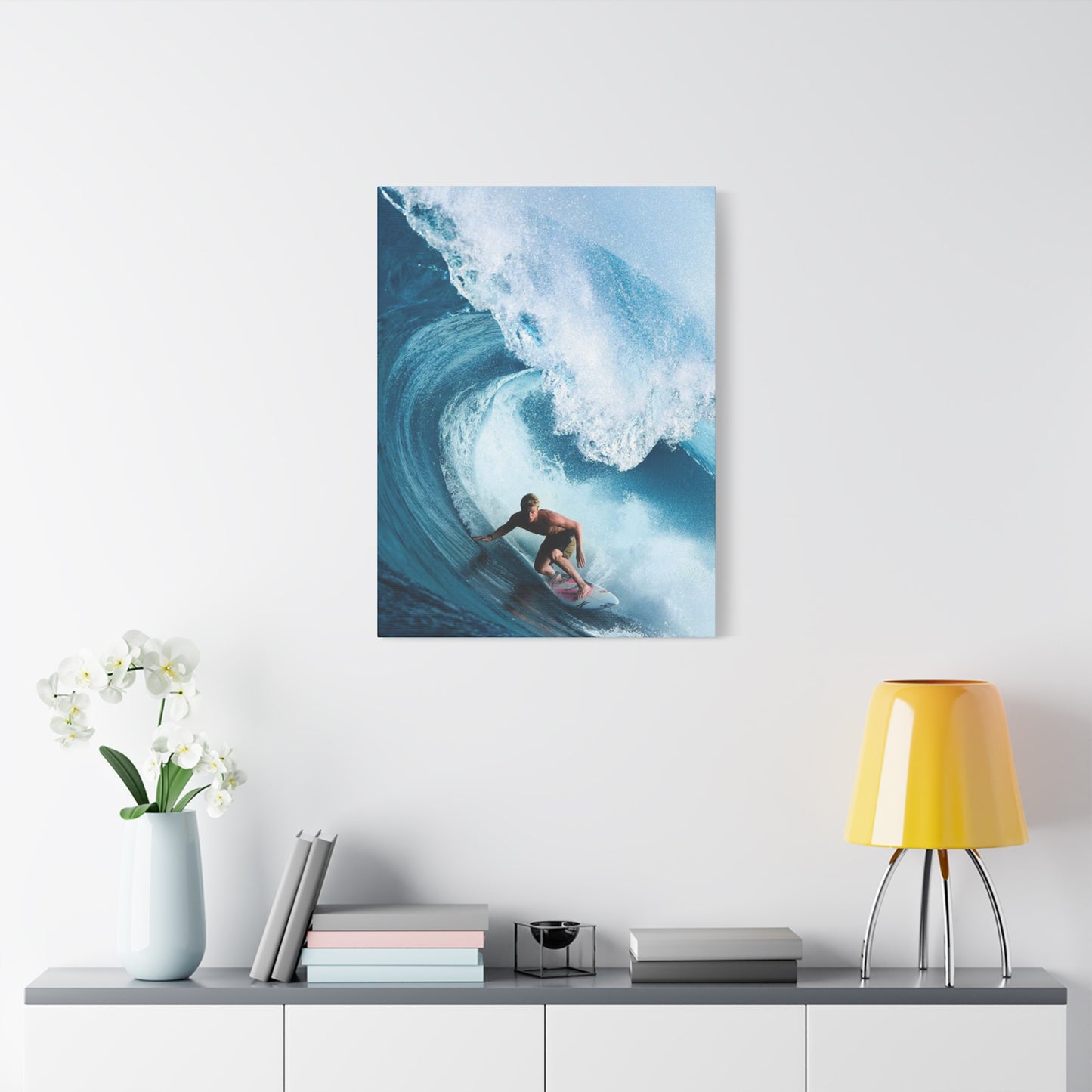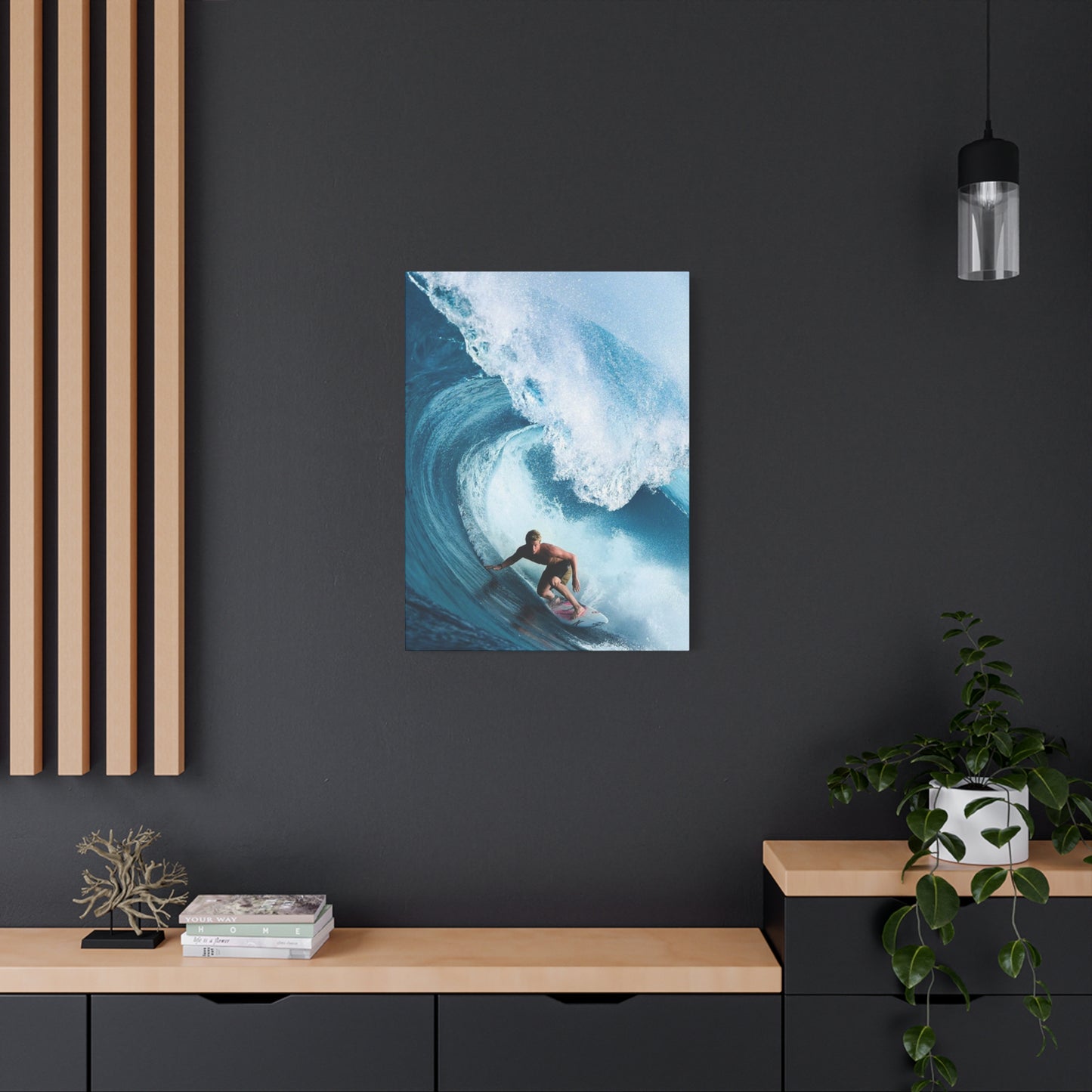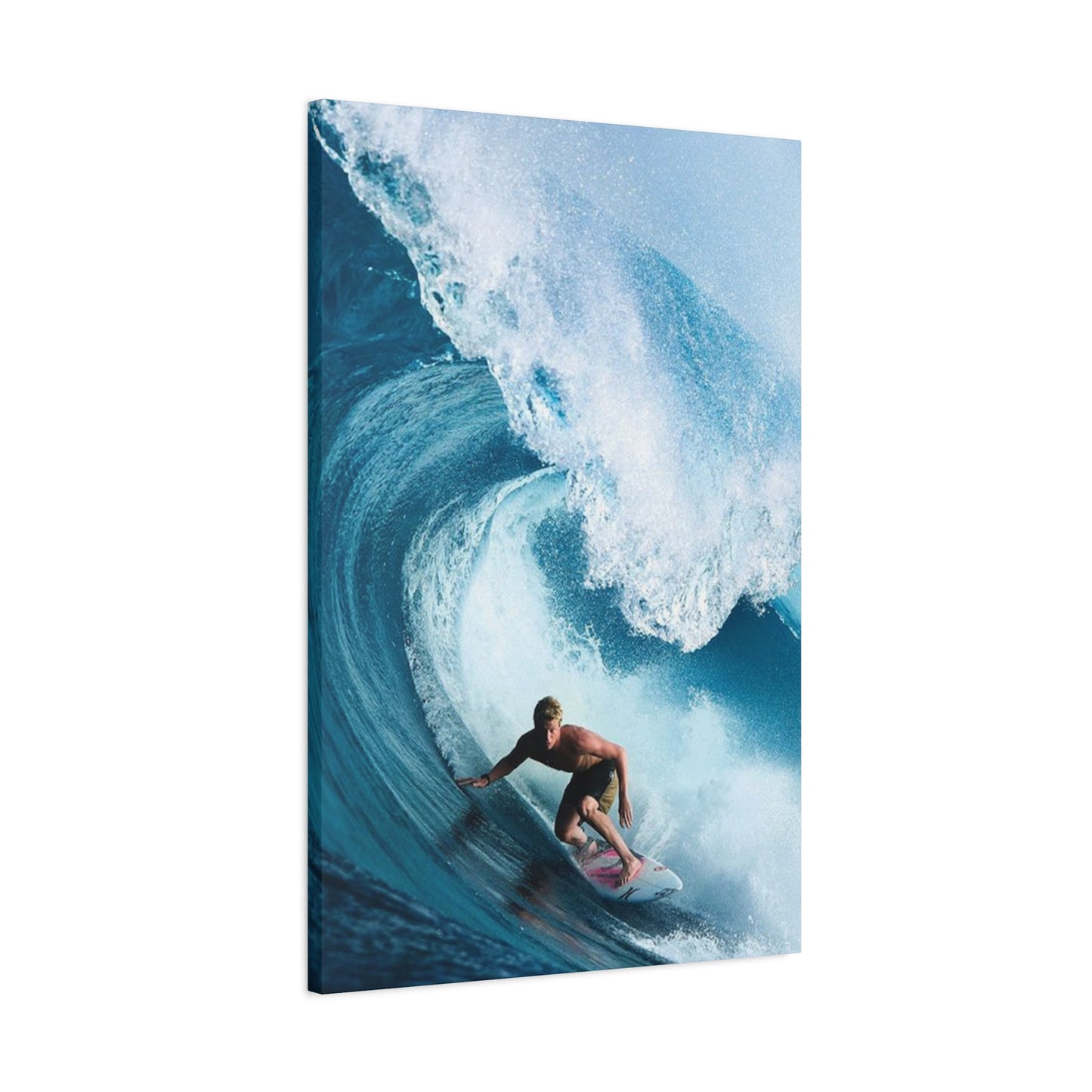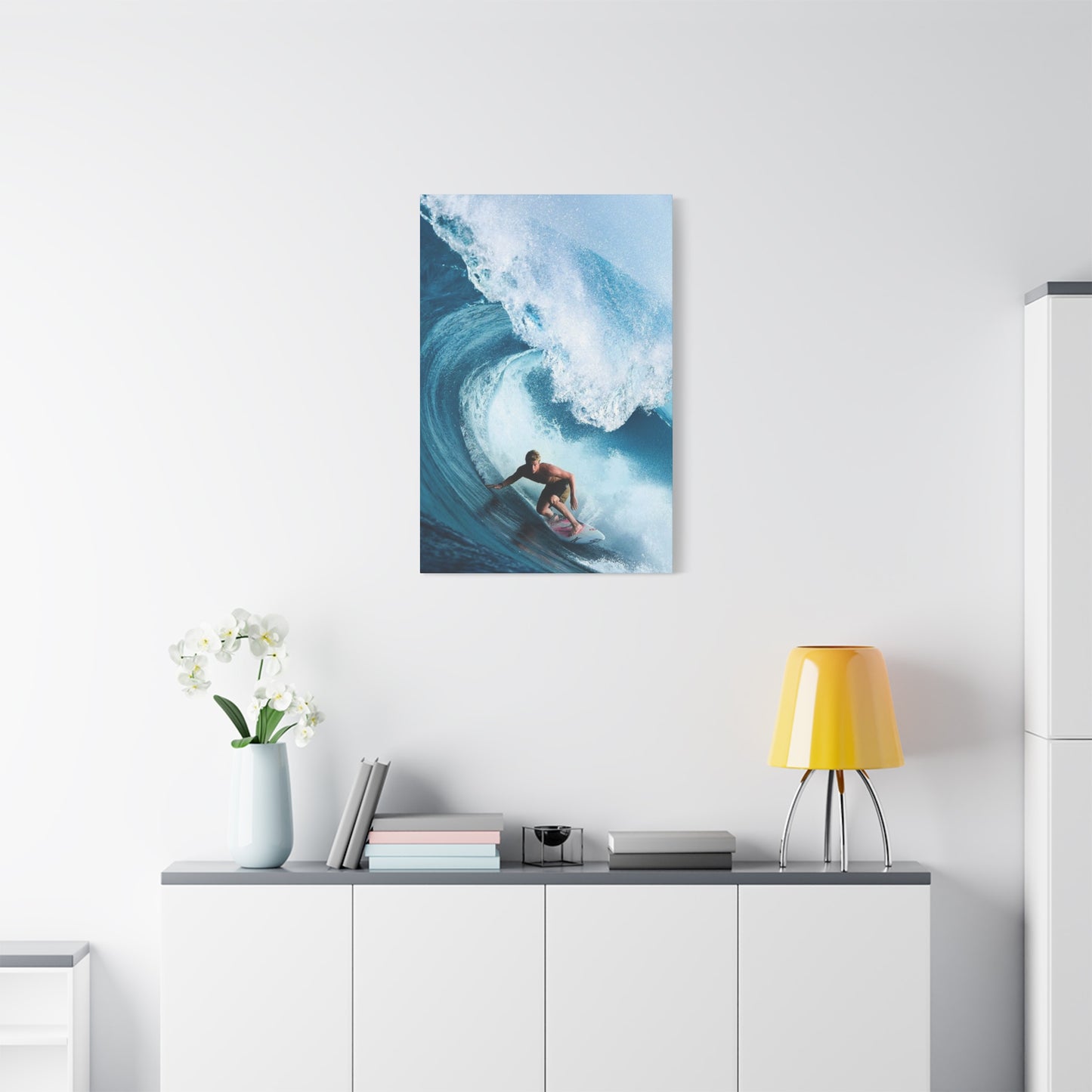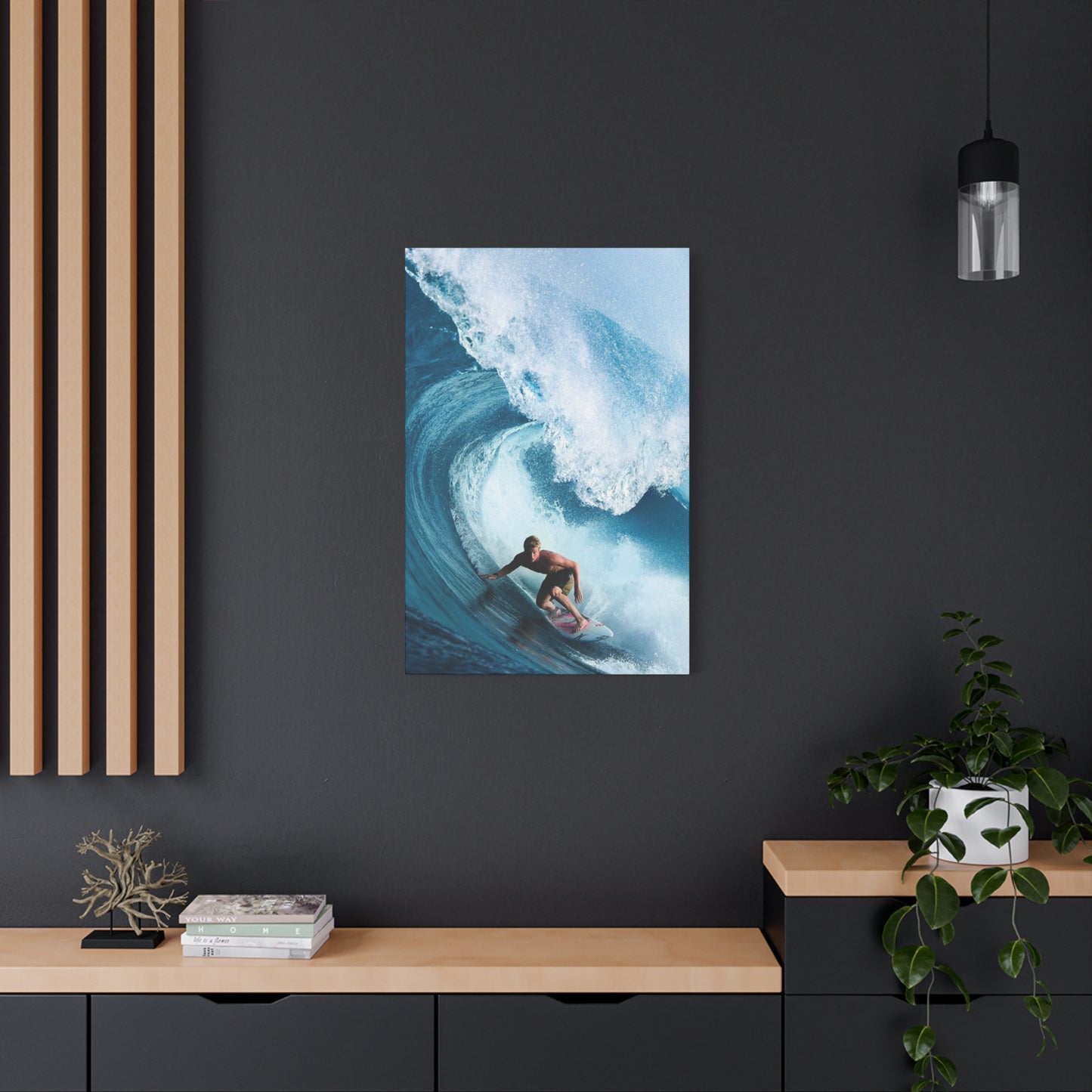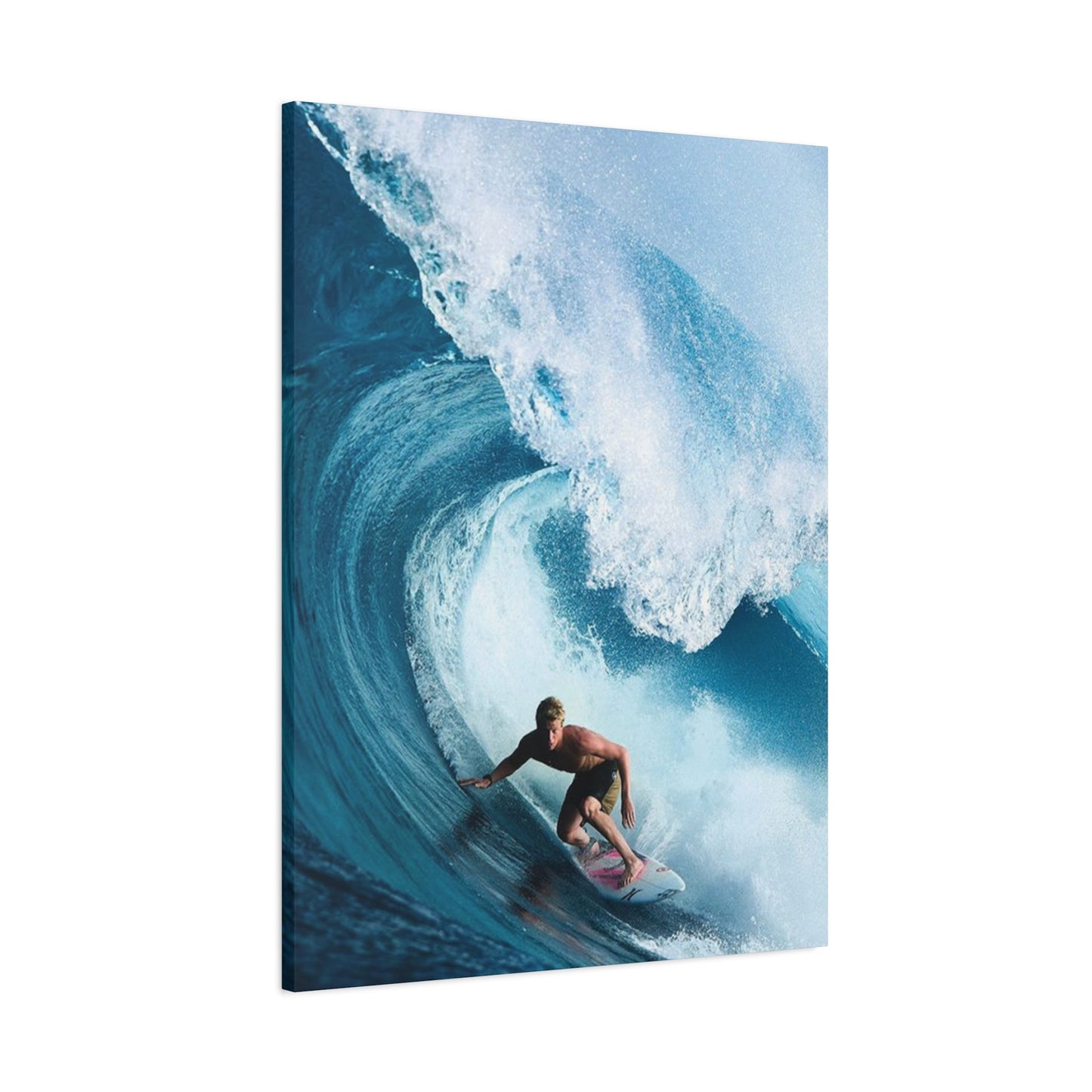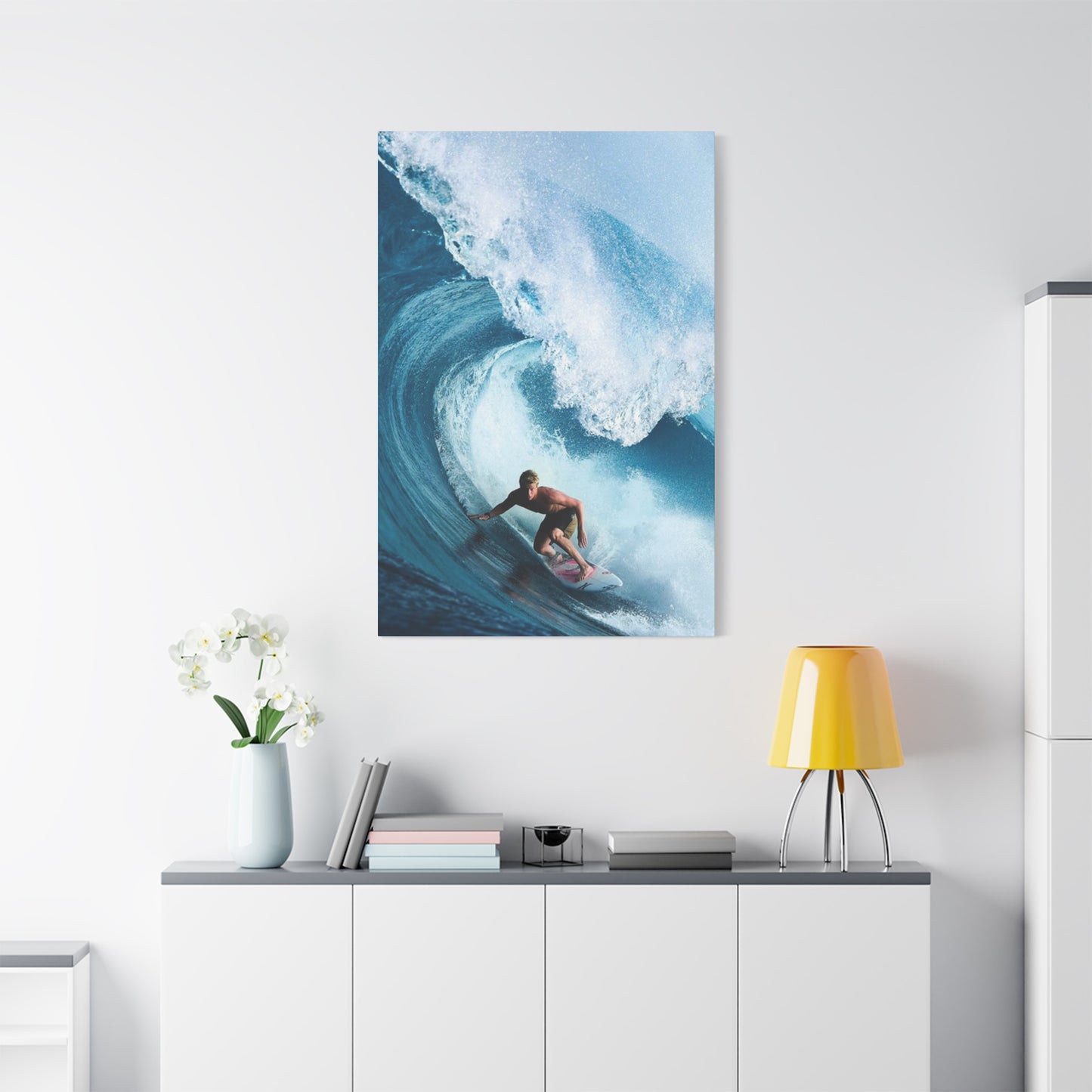Riding the Wave: The Allure of Large Surfing Wave Wall Art in Coastal Decor
The fusion of oceanic beauty and artistic expression creates a timeless aesthetic that can instantly transform living spaces into tranquil coastal sanctuaries. Large surfing wave wall art, in particular, captures the dynamic power and serene grace of the sea, making it a perfect centerpiece for homes seeking to evoke the spirit of the ocean. This exploration delves into how the raw energy of rolling swells and the peaceful allure of marine landscapes come alive on canvas and walls, and how to choose the ideal piece that harmonizes with your interior design.
Surfing wave art harnesses the duality of the ocean—its immense power and calming rhythm. Artists interpret waves in various styles, from hyper-realistic photographic prints that freeze a moment of cresting white water, to abstract paintings that convey the fluid motion and energy through bold brushstrokes and vibrant colors. Some artworks emphasize the translucence of water, with light filtering through waves in soft blues and greens, while others celebrate the raw force of crashing surf with foamy whites and deep navy blues. Each interpretation brings a unique emotional texture, allowing homeowners to select art that resonates with their personal connection to the sea.
The scale of large wave art plays a critical role in its impact within a room. Oversized pieces can dominate a space, creating a breathtaking focal point that immerses viewers in the sensation of standing at the water’s edge. When placed above sofas, beds, or in entryways, these artworks set a tone of adventure and tranquility, instantly evoking coastal vibes. Complementing the artwork with natural textures such as driftwood frames, woven baskets, or sandy-hued textiles further enhances the oceanic atmosphere, tying the room’s elements together in a cohesive theme.
Choosing the perfect wave artwork involves considering not only style and scale but also color harmony and mood. Lighter, airy pieces with soft pastels can brighten a room and promote relaxation, ideal for bedrooms or meditation spaces. In contrast, more intense and dramatic pieces with deep blues and dynamic movement energize social spaces like living rooms or entertainment areas. Additionally, curated collections of smaller wave-themed artworks can create a gallery wall that tells a story of the sea’s many moods.
Beyond aesthetics, large surfing wave wall art can also serve as a daily reminder of nature’s power and beauty, inspiring mindfulness and a sense of adventure. Whether you’re a seasoned surfer, a beach lover, or simply someone drawn to the calming presence of water, incorporating these majestic images into your home decor brings the ocean’s majesty inside, creating a sanctuary that soothes and invigorates.
Capturing the Essence: Understanding Aquatic Motion Art Style
The artistic representation of ocean movement has evolved into a distinct visual language that speaks to adventure seekers and nature enthusiasts alike. This style encompasses more than simple depictions of water; it captures the raw energy, fluid dynamics, and emotional resonance of coastal experiences. Artists working in this medium draw inspiration from the perpetual motion of tides, the way sunlight dances across cresting waters, and the profound connection between humans and the sea.
When examining pieces in this category, you'll notice characteristic elements that define authentic aquatic motion artwork. The interplay of blues ranging from deep navy to aquamarine creates depth and dimension. White foam caps are rendered with careful attention to texture, suggesting movement frozen in time. Many artists incorporate aerial perspectives, showing how swells form patterns across the ocean surface, while others focus on the intimate moment when a rider connects with a perfect break.
The technical execution varies widely among practitioners. Some favor hyperrealistic approaches, meticulously recreating every droplet and reflection. Others embrace abstract interpretations, using bold strokes and color fields to evoke the feeling of being immersed in saltwater rather than presenting a literal representation. Mixed media techniques combining acrylic, resin, and metallic elements add physical texture that mirrors the tactile nature of ocean surfaces.
Contemporary artists have pushed boundaries by incorporating unconventional materials into their work. Recycled ocean plastics, actual sand from beaches, and crushed shells become integral to the composition, adding environmental commentary to aesthetic beauty. Digital artists have also entered this space, creating stunning visualizations that blend photography with digital painting techniques, producing works that blur the line between captured moments and artistic interpretation.
Transforming Environments: Aquatic Power on Display
Large-scale artwork depicting maritime forces possesses an undeniable ability to anchor and energize interior spaces. When you introduce substantial pieces featuring dynamic water scenes into a room, you're not merely hanging decoration; you're installing a focal point that influences the entire atmosphere. The scale itself commands attention, but the subject matter brings additional psychological effects, evoking feelings of freedom, adventure, and connection to natural rhythms.
The psychological impact of viewing oceanic imagery is well-documented. Studies suggest that exposure to representations of water can reduce stress levels and promote mental clarity. The color palette associated with marine environments, particularly various blue hues, has calming properties while simultaneously inspiring creativity and contemplation. A properly selected piece creates a visual escape, allowing viewers to mentally transport themselves to coastal environments regardless of their actual location.
Installation considerations become crucial when working with larger formats. The weight of substantial works requires proper mounting hardware and wall support. Placement height should be calculated based on viewing angles and furniture arrangements. In living rooms, positioning artwork at eye level when seated creates optimal engagement. For entryways or hallways where viewers are standing, adjustment upward ensures comfortable viewing. Lighting also plays a critical role; dedicated picture lights or strategically placed track lighting can dramatically enhance visual impact, especially when illuminating textured surfaces or metallic accents.
The versatility of oversized marine art allows it to function across various room types. In bedrooms, the calming nature of water scenes promotes relaxation conducive to rest. Home offices benefit from the inspirational qualities these pieces provide, with the symbolism of riding challenges offering subliminal motivation. In common areas like living rooms and family spaces, dramatic ocean scenes become conversation starters and defining design elements that unify other decorative choices.
Magnitude and Impact: Oversized Ocean-Themed Artwork for Statement Walls
Creating truly memorable interiors often requires bold choices, and few options make stronger statements than expansive artwork featuring maritime subjects. These pieces transcend conventional decoration, becoming architectural elements that define space and establish atmosphere. The sheer size commands visual attention while the subject matter injects energy and movement into otherwise static environments.
Selecting appropriately sized pieces requires careful measurement and spatial awareness. A common guideline suggests artwork should occupy approximately two-thirds to three-quarters of available wall space to achieve proper visual balance. However, in minimalist settings with clean lines and limited additional decoration, even larger proportions can work beautifully, allowing the piece to become the undisputed focal point. Conversely, in rooms with substantial furniture or architectural features, sizing should account for these elements to maintain visual harmony.
The content and composition of oversized pieces deserve special attention. Wide horizontal formats naturally complement modern furniture arrangements and emphasize the expansive nature of seascapes. Vertical orientations work well in spaces with high ceilings, drawing the eye upward and making rooms feel taller. Multi-panel installations, sometimes called triptychs or polyptychs, offer flexibility in arrangement while creating visual rhythm across wall surfaces.
Material selection significantly impacts both appearance and longevity. Traditional stretched canvas remains popular for its texture and light-absorbing qualities, creating depth that flat surfaces cannot match. Metal prints offer contemporary aesthetics with vibrant color saturation and a glossy finish that reflects light dynamically. Acrylic mounting provides depth perception through the transparent layers, creating a floating effect that enhances three-dimensional qualities. Wood panel mounting adds organic warmth that complements coastal themes while providing durability.
Frame choices should enhance rather than overwhelm. Simple floating frames in natural wood tones or matte black maintain focus on the artwork itself. For beach house aesthetics, weathered or driftwood-style frames reinforce the coastal connection. In modern interiors, frameless gallery wraps with printed edges create clean, contemporary presentations that emphasize the artwork's visual impact without additional embellishment.
Maritime Strength: The Force of Ocean Landscapes in Visual Expression
The ocean's power manifests in countless forms, from gentle lapping wavelets to towering storm-driven walls of water. Artists who focus on depicting this force understand that successful works must convey not just visual appearance but emotional resonance. The best pieces make viewers almost feel the salt spray, hear the thunderous crash, and sense the raw energy inherent in moving water.
Compositional strategies vary based on the specific aspect of oceanic power being emphasized. Some artists favor close-up perspectives that place viewers directly in the impact zone, where churning white water fills the frame and creates visceral immediacy. Others select elevated vantage points showing how individual components contribute to larger patterns, revealing the organized chaos of ocean systems. Underwater perspectives offer alternative viewpoints, looking upward through translucent water toward light-drenched surfaces or capturing the moment when someone ducks beneath an overhead barrel.
Color psychology plays a significant role in conveying power and emotion. Deep indigos and near-blacks suggest depth and mystery, evoking the unknown qualities of open ocean. Bright turquoises and aquamarines communicate tropical paradise and clarity. Storm-driven grays and slate blues introduce drama and tension. The strategic use of white foam creates contrast and emphasizes movement, guiding the viewer's eye through the composition while suggesting the violence of water breaking against itself or solid surfaces.
Texture application adds another dimension to representations of water power. Heavy impasto techniques, where paint is applied thickly with visible brushstrokes, create physical relief that catches light and casts shadows, enhancing the sense of three-dimensionality. Some artists incorporate actual dimensional elements, building up surfaces with modeling paste, resin pours, or embedded materials to create genuinely tactile experiences that reward close examination.
The symbolic resonance of powerful ocean imagery extends beyond aesthetic appreciation. Throughout human culture, water has represented cleansing, renewal, and transformation. Simultaneously, the ocean embodies challenge, respect for natural forces, and the rewards that come from conquering personal fears. Artwork depicting these themes can serve as daily reminders of personal philosophy, encouraging viewers to embrace challenges and maintain perspective on life's ups and downs.
Aquatic Athletics: Capturing the Essence in Visual Media
The culture surrounding ocean-based board sports encompasses far more than athletic activity; it represents a lifestyle, philosophy, and deep connection to natural rhythms. Artists who successfully capture this essence understand that their work must convey not just the physical act but the emotional and spiritual dimensions that practitioners experience. These pieces resonate most strongly with those who've felt the exhilaration personally, but they also communicate that feeling to those who experience it only vicariously.
Authentic representation requires understanding the activity's nuances. The body positioning, board angle, and relationship to the water's face all convey skill level and moment-specific action. An experienced eye can distinguish between someone carving across a wave's face, executing a cutback, or preparing for an aerial maneuver. Artists who participate in the sport themselves often bring additional authenticity, having lived the moments they're depicting and understanding what makes them meaningful.
The human element introduces narrative dimension. Silhouettes against backlit waters create dramatic compositions while maintaining universal appeal, allowing any viewer to project themselves into the scene. Detailed portraits showing facial expressions capture the intense focus, joy, or determination inherent in these moments. Groups of riders waiting for sets or celebrating successful runs introduce social elements, acknowledging the community aspects central to the culture.
Environmental context enriches storytelling potential. Golden hour lighting transforms ordinary scenes into magical moments, with warm tones contrasting against cool water colors. Storm light creates dramatic tension, suggesting both danger and opportunity. Locations identifiable by their unique geological features or wave characteristics appeal to knowledgeable enthusiasts while educating others about the sport's geography. Remote, pristine settings emphasize the adventure and exploration aspects, celebrating the search for perfect, uncrowded conditions.
The intersection of athletic action and artistic interpretation creates pieces that function simultaneously as sports documentation and fine art. This duality expands their appeal beyond niche enthusiasts to general audiences who appreciate dynamic composition, color harmony, and the celebration of human achievement in natural settings. The best works transcend their specific subject matter to become statements about courage, skill, and the pursuit of momentary perfection.
Azure Expressions: Incorporating Ocean Hues into Contemporary Spaces
The color palette associated with marine environments offers remarkable versatility for interior design applications. Various blue tones provide foundational elements that work across diverse aesthetic approaches, from minimalist contemporary to eclectic bohemian. Understanding how to leverage these hues effectively allows homeowners to create cohesive, visually appealing spaces that evoke desired moods and atmospheres.
Light aquatic tones introduce airiness and openness, making spaces feel larger and more breathable. These shades work particularly well in smaller rooms or areas with limited natural light, reflecting available illumination and preventing spaces from feeling closed or oppressive. Paired with white or cream tones, they create fresh, clean aesthetics reminiscent of Mediterranean coastal architecture. Combined with natural wood elements, they evoke beach cottage charm.
Medium blue shades offer more visual weight while maintaining the calming properties associated with water colors. These versatile tones serve well as accent walls or primary colors in artwork, providing enough presence to anchor spaces without overwhelming. They pair beautifully with both warm and cool accent colors, allowing for seasonal decoration changes or diverse accessory choices. Gray-blue hybrids bridge cool and warm palettes, offering sophisticated neutrality with aquatic undertones.
Deep navy and indigo tones bring drama and sophistication, functioning almost as neutrals while maintaining distinct character. These darker shades work exceptionally well in spaces where moody, intimate atmospheres are desired. They provide excellent backdrops for lighter artwork, creating contrast that makes pieces pop visually. In dining areas or bedrooms, these deeper tones create enveloping environments conducive to relaxation and conversation.
Accent colors complement and enhance blue-based schemes. Sandy beiges and warm tans reference beaches and dunes, grounding aquatic palettes with earth tones. Coral and seafoam greens introduce organic variation inspired by marine life. White acts as both neutral and active element, suggesting foam, clouds, or tropical architecture. Metallic accents in gold, bronze, or copper add warmth and luxury, preventing spaces from feeling too cool or sterile.
Excitement Meets Expression: Merging Physical Intensity with Visual Creativity
The adrenaline rush experienced during ocean activities finds expression through dynamic visual compositions that attempt to convey intensity through static media. This marriage of physical excitement and artistic interpretation creates a unique category of work that appeals to both action sports enthusiasts and fine art collectors who appreciate energy, movement, and unconventional subject matter.
Capturing motion in still images requires strategic compositional choices. Diagonal lines suggest movement and instability, creating visual tension that engages viewers. Blurred elements indicate speed and rapid transition, while sharp focal points anchor attention. The strategic use of depth of field allows artists to emphasize specific elements while suggesting the broader context of continuous action. Freeze-frame moments at peak action points create dramatic impact, showcasing athletic prowess and natural power simultaneously.
Color saturation and contrast contribute significantly to perceived energy levels. Highly saturated palettes with strong value contrasts create visual vibration, exciting the eye and conveying intensity. Complementary color schemes, particularly blue-orange combinations common in marine environments at sunrise or sunset, naturally attract attention and create dynamic tension. Strategic use of pure whites for highlights suggests explosive force and draws focus to key compositional elements.
Abstract interpretations of ocean action offer alternative approaches to representing excitement. Rather than documenting specific moments, these works use color, form, and gesture to evoke emotional responses associated with aquatic adventures. Broad, sweeping strokes suggest the arc of a turn. Splattered or dripped paint mimics spray patterns. Layered transparent elements create depth perception similar to looking through water. These approaches allow viewers to engage emotionally without requiring specific sport knowledge.
The psychological appeal of action-oriented artwork extends beyond literal representation. These pieces tap into fundamental human responses to challenge, achievement, and natural forces. They serve as visual reminders of personal capabilities, encouraging viewers to approach their own challenges with similar commitment and courage. In home gyms, offices, or personal spaces, they function as motivational elements while providing aesthetic value.
Shoreline Sophistication: Contemporary Wall Art with Aquatic Themes
Modern coastal aesthetics have evolved far beyond nautical clichés, embracing sophisticated approaches that celebrate oceanic inspiration without resorting to literal anchors, ships' wheels, or seashells. Contemporary interpretations focus on essential elements like color, movement, and the emotional resonance of coastal experiences, creating pieces that work beautifully in urban apartments as well as beachfront properties.
Minimalist approaches distill ocean experiences to their purest visual elements. Simple color field paintings in graduated blue tones evoke horizon lines where sea meets sky. Line drawings capturing the essential profile of a wave in motion communicate the subject with elegant economy. Photography printed in restrained palettes emphasizes form, light, and texture over realistic color representation, creating sophisticated statements that complement modern interiors.
Geometric interpretations apply contemporary design principles to aquatic subjects. Angular representations of waves use faceted surfaces to suggest motion while maintaining clean, modern aesthetics. Pattern-based approaches inspired by ocean textures, like the regular formation of ripples or the fractal-like nature of foam, create all-over designs that function as both art and visual texture. These approaches appeal to viewers who appreciate conceptual sophistication alongside aesthetic beauty.
Mixed media works combine traditional artistic techniques with contemporary materials and processes. Resin pours create glossy, dimensional surfaces that genuinely resemble water's reflective properties. Metallic leaf application catches light dynamically, suggesting sun on water. Embedded elements like sand, shells, or sea glass add textural interest and literal connections to beach environments. These innovative approaches push boundaries while remaining grounded in oceanic inspiration.
Scale and proportion considerations in contemporary design differ from traditional approaches. Rather than centering single large pieces, some designers favor asymmetrical arrangements or collections of related works that create visual interest through repetition and variation. Multi-panel installations allow for larger overall impact while maintaining flexibility in arrangement. Oversized works on unusual formats, like narrow horizontal pieces spanning entire walls, create dramatic statements that define spaces.
Expansive Imagery: Large-Format Artwork Depicting Maritime Movement
Size matters when creating visual impact, and large-format pieces depicting ocean motion offer unparalleled ability to transform spaces and captivate attention. These substantial works function almost like windows, providing visual portals to aquatic environments that transport viewers beyond their immediate physical surroundings. Understanding how to select, position, and integrate these pieces ensures maximum impact and long-term satisfaction.
Production methods for large-format work have expanded significantly with technological advances. Traditional hand-painted works retain unique qualities, with visible brushwork and subtle color variations that reward extended viewing. However, production limitations on size and cost have led many artists to embrace digital printing technologies that allow virtually unlimited scaling. High-resolution photography and digital painting can be printed at enormous sizes while maintaining perfect clarity and color accuracy.
Material substrates for large prints vary in appearance and durability. Canvas remains popular for its traditional appearance and relatively lightweight properties compared to rigid substrates. However, modern alternatives offer advantages. Aluminum panels provide exceptional durability and color vibrancy with contemporary aesthetics. Acrylic mounting creates depth and luminosity through transparent layers. Wood panel printing offers organic warmth while providing rigid stability that prevents warping or sagging over time.
Installation requirements scale with artwork size. Substantial pieces require appropriate mounting hardware, typically heavy-duty picture hangers or French cleat systems that distribute weight across larger wall areas. Stud placement becomes critical for secure mounting. Professional installation may be advisable for particularly large or valuable pieces, ensuring proper support and optimal positioning. Some artists provide custom mounting solutions integrated into artwork construction.
Maintenance considerations increase with size. Larger surfaces accumulate dust and require regular cleaning, though methods vary by material. Canvas can be gently dusted or vacuumed with brush attachments. Acrylic and glass surfaces tolerate damp cleaning but require careful product selection to avoid streaking or damage. Metal prints generally require only occasional wiping. UV protection becomes important for pieces in direct sunlight, with specialized glazing or protective coatings preventing color fading over time.
Coastal Enthusiasm: Visual Representations for Ocean Devotees
Those who feel deep connections to marine environments seek artwork that reflects and celebrates their passion. These pieces serve multiple functions: they beautify living spaces, remind viewers of meaningful experiences, and express personal identity and values. Understanding what resonates with true ocean devotees helps in selecting or creating artwork that provides lasting satisfaction and emotional resonance.
Authenticity ranks paramount for knowledgeable enthusiasts. Those who spend significant time in and around oceans recognize when artists truly understand their subjects versus when they're working from superficial reference. The way light interacts with water, the specific appearance of different wave types, the accurate representation of weather conditions and their effects on ocean surfaces, all these details matter to experienced eyes. Artists who themselves participate in ocean activities or live in coastal areas often bring this authenticity naturally.
Personal connection influences selection criteria significantly. Individuals drawn to tropical destinations prefer warm color palettes and calm, inviting water representations. Those who embrace challenging conditions gravitate toward dramatic pieces showing power and intensity. Photography or paintings of specific locations hold special meaning for people who've visited or live near those places. Custom commissioned work allows for personalizing pieces to reflect individual experiences and preferred locations.
The emotional narrative embedded in artwork determines long-term satisfaction. Pieces that evoke specific feelings, whether peaceful contemplation, excitement and energy, or nostalgic longing, maintain engagement over time. The best selections resonate on multiple levels, offering aesthetic beauty, technical excellence, and emotional authenticity. These works become treasured possessions rather than disposable decoration, increasing in personal value regardless of market considerations.
Collection development represents another dimension for serious enthusiasts. Rather than single showpiece items, some individuals build cohesive collections that explore various aspects of ocean experiences. Seasonal variations, different geographical locations, various weather conditions, multiple perspectives on similar subjects, all these approaches allow for deeper exploration while creating opportunities for rotating displays and maintaining visual freshness in living spaces.
Contemporary Aquatic Inspiration: Modern Wall Art for Urban Dwellers
Bringing ocean energy into modern living spaces requires thoughtful selection of pieces that complement contemporary design while maintaining authentic connection to maritime inspiration. Urban environments often lack natural coastal access, making visual representations particularly valuable for maintaining connection to favorite environments and experiences. The best modern interpretations balance sophisticated aesthetics with genuine emotional resonance.
Color scheme compatibility ensures cohesive integration with existing decor. Modern interiors often feature neutral palettes with strategic accent colors. Artwork with flexible color ranges works across multiple settings, while bold pieces can introduce desired accent hues. Monochromatic blue-on-blue schemes offer sophisticated subtlety. High-contrast compositions in blue and white create graphic impact. Multi-colored pieces incorporating sunset hues add warmth to otherwise cool palettes.
Framing and presentation significantly impact how work reads in contemporary settings. Clean, simple frames or frameless gallery wraps maintain focus on imagery while complementing modern aesthetics. Metal frames in black, white, or metallic finishes offer industrial edge. Natural wood frames in sleek profiles bridge contemporary and organic elements. The mounting method, whether flush to walls or with spacers creating shadow gaps, affects the overall presentation and perceived formality.
Thematic consistency across multiple pieces creates cohesive collections that increase visual impact. A series depicting progressive stages of wave formation tells visual stories while creating rhythm through repetition with variation. Multiple views of the same location at different times or under different conditions explore subtle changes and atmospheric variations. Abstract interpretations of aquatic elements function as coordinated sets that work individually or together.
Technology integration represents an emerging frontier in contemporary art display. Digital frames allow for rotating displays of multiple pieces, providing variety within fixed space constraints. Backlit or edge-lit presentations enhance specific works, adding dimension and creating focal points. Smart home integration allows for automated display changes based on time, mood, or other factors, making art more dynamic and interactive.
Aquatic Atmosphere: Introducing Ocean Sensibility to Living Spaces
Creating authentic coastal ambiance in interior environments extends beyond simply hanging beach-themed artwork. It requires thoughtful curation of elements that work together to evoke the sensory experience of oceanside living. Visual art forms the foundation, but supporting elements complete the transformation, engaging multiple senses and creating immersive environments.
Layering textures mirrors the tactile variety of coastal landscapes. Natural fiber rugs suggest sandy beaches underfoot. Linen upholstery breathes like coastal breezes. Weathered wood furniture references driftwood and beach structures. These organic materials ground spaces while providing textural interest that prevents sterile minimalism. When combined with artwork depicting water's fluidity, the contrast between solid and liquid, stable and dynamic, creates balanced compositions.
Lighting design dramatically affects how ocean-themed spaces feel. Natural light maximizes during daytime through minimal window treatments. Sheer curtains filter harsh sun while maintaining brightness. Strategically positioned mirrors reflect light throughout spaces, mimicking water's reflective properties. Evening lighting layers task, ambient, and accent sources. Dimmers allow for mood adjustment. Warm white bulbs prevent cold, institutional feelings while cooler temperatures emphasize fresh, airy qualities during bright conditions.
Accessory selection provides opportunities for reinforcing coastal themes without overwhelming spaces. Glass vessels in aquatic hues catch light beautifully. Natural elements like driftwood, shells, or coral add organic interest with authentic connections to beach environments. Woven baskets provide functional storage while contributing textural variety. Throws and pillows in complementary colors allow for seasonal variation and additional comfort.
Plant selection brings living elements into interior environments while complementing oceanic themes. Tropical varieties like palms, birds of paradise, or monstera suggest warm, beach destinations. Succulents and air plants require minimal maintenance while providing organic sculptural elements. Placing greenery at various heights creates depth and visual interest while improving air quality and contributing to overall wellness.
Fluid Force: Capturing Marine Strength in Visual Format
The raw strength of ocean systems presents both opportunity and challenge for artists seeking to represent it visually. Successfully conveying power through static media requires understanding both the physical dynamics of water movement and the psychological factors that trigger human responses to natural forces. The most effective pieces make viewers feel small before nature's magnitude while simultaneously inspiring awe and respect.
Scale relationships within compositions communicate relative size and force. Including recognizable reference points like human figures, boats, or coastal structures provides context that helps viewers grasp the magnitude of depicted water formations. Without such references, even massive forms can read ambiguously. Strategic placement of these elements, often small within the overall composition, emphasizes the vastness of surrounding water while maintaining focal points for viewer attention.
Lighting conditions dramatically affect perceived power and mood. Stormy, diffused light suggests threatening conditions and emphasizes drama. Side-lighting creates texture through shadows, revealing water's three-dimensional surface qualities. Backlighting produces silhouettes and creates ethereal, transcendent qualities even in powerful seas. Golden hour warmth can soften even intense conditions, while harsh midday light emphasizes clarity and detail.
Atmospheric elements add context and enhance environmental storytelling. Spray caught in sunlight or wind creates secondary visual interest while suggesting violent forces at play. Cloud formations indicate weather patterns and set mood. Rain adds another dimension of water presence beyond the ocean itself. These elements transform simple seascapes into complete environmental portraits that engage viewers more fully.
The balance between beauty and danger makes powerful ocean imagery compelling. Water simultaneously attracts and threatens, promising both recreation and destruction. Artists who navigate this duality create work that maintains visual appeal while acknowledging genuine respect for natural forces. This honest representation resonates with anyone who's experienced the ocean's power personally, creating authentic connection between artwork and viewer.
Traditional Meets Contemporary: Where Athletic Culture Intersects Premium Visual Art
The evolution of ocean board sports from countercultural fringe activities to mainstream athletic pursuits and lifestyle brands has paralleled growing acceptance of related imagery within fine art circles. What once existed primarily as documentary photography or simple posters has expanded into sophisticated artistic movement embracing diverse styles, techniques, and interpretations. This elevation benefits both athletes and artists, creating new markets and cultural recognition.
Historical context reveals interesting progressions. Early representations primarily served documentary functions, capturing athletic achievements or promoting destinations and equipment. As the sport's cultural influence grew, so did artistic interpretation. The 1960s and 70s saw psychedelic poster art become associated with beach culture. The 1980s brought bolder graphics and commercial illustration. Recent decades have witnessed genuine fine art engagement, with museum exhibitions, gallery representation, and serious critical consideration.
Technical excellence now matches any artistic discipline. Painters working in this subject area demonstrate mastery of light, color, and composition comparable to any landscape tradition. Photographers employ cutting-edge techniques and equipment to capture moments impossible just years ago. Sculptors create three-dimensional interpretations ranging from realistic to abstract. This technical sophistication demands respect and consideration beyond simple genre categorization.
Crossover appeal extends market potential beyond sport participants. Collectors who've never stood on a board appreciate the aesthetic qualities, technical achievement, and philosophical dimensions. The universal themes of challenge, achievement, natural beauty, and human capability transcend specific activities. This broad appeal has encouraged more artists to explore these subjects, creating positive feedback loops that continue raising quality and cultural standing.
Institutional recognition validates the field's artistic legitimacy. Major museums have mounted exhibitions focused on ocean sport culture and related visual art. Galleries in coastal and urban centers regularly feature related work. Art fairs include it alongside traditional genres. This acceptance opens doors for emerging artists while providing established practitioners with new opportunities for exposure and commercial success.
Grand Scale Ocean Imagery: Artwork for Commanding Architectural Features
Statement walls represent significant architectural opportunities that demand artwork equal to their visual weight. These prominent surfaces, whether expansive blank walls in open-concept spaces or dramatic features behind furniture arrangements, call for substantial pieces that can anchor attention and define environments. Ocean-themed work scaled appropriately for such applications transforms architectural challenges into design triumphs.
Architectural proportion dictates appropriate artwork dimensions. In spaces with high ceilings, vertical emphasis draws eyes upward and makes rooms feel even taller. Horizontal formats emphasize width and work well above low furniture pieces like sofas or beds. Square formats offer balanced versatility. Multi-panel installations can be configured to precisely fit irregular or unusually proportioned spaces while maintaining visual cohesion through related subject matter or style consistency.
Viewing distance calculations ensure optimal visual impact. Highly detailed work rewards close examination but requires sufficient resolution or original execution quality to maintain impact at proximity. From across large rooms, bold compositions with strong value contrasts and clear focal points read more effectively than subtle, nuanced pieces that lose impact at distance. Ideally, statement pieces work at multiple viewing distances, offering initial impact from afar and rewarding details upon closer approach.
Color relationships between artwork and architectural elements require careful consideration. Complementary schemes create dynamic tension and energy. Analogous palettes offer harmonious integration with subtle sophistication. Neutral architectural elements provide flexible canvases for bold artwork colors, while strong architectural colors may require more carefully coordinated artwork selections. Testing with sample materials or digital mockups prevents costly mistakes.
Lighting design makes or breaks large artwork installations. Natural light varies throughout days and seasons, affecting appearance. Window placement relative to artwork matters; direct sunlight causes fading but can also create dramatic effects when managed properly. Artificial lighting should illuminate pieces without creating glare or hotspots. Track lighting offers flexibility for highlighting specific areas. Picture lights provide dedicated illumination. Ambient lighting ensures pieces remain visible during evening hours without requiring bright overhead fixtures.
Motion and Energy: Artistic Interpretations of Tidal Force
The perpetual movement of tides and waves represents fundamental natural rhythms that have fascinated humans throughout history. Artists attempting to capture this motion in static media face interesting challenges, requiring creative solutions that suggest movement, energy, and temporal progression within fixed compositions. Various technical and conceptual approaches have emerged, each offering unique strengths and aesthetic qualities.
Implied motion through compositional structure guides viewer attention through pieces in ways that suggest temporal progression. Diagonal arrangements create visual momentum, pulling eyes through scenes along established vectors. Leading lines formed by wave crests, water streaks, or foam patterns direct attention while suggesting directional movement. Strategic placement of focal points creates visual rhythms that parallel actual water movements.
Sequential imagery suggests temporal progression through multiple related compositions. Triptychs or larger multi-panel works can show progressive stages of wave formation, from distant swell through breaking crest to dissipating foam. This approach literally depicts change over time while creating visual rhythm through repetition and variation. When installed with proper spacing, these series create compelling narrative structures.
Blurred motion effects, achieved through long exposure photography or intentional painting techniques, directly represent movement through time compression. These approaches create ethereal, dreamlike qualities that contrast sharply with frozen-moment clarity. The soft, flowing forms suggest both movement and temporal passage, creating contemplative pieces that invite extended viewing and reflection.
Abstract gestural techniques use the physical act of painting to embody energetic qualities. Broad sweeping strokes mirror water's flowing movements. Splattered or dripped paint suggests spray and splash. Layered applications create depth that parallels water's translucent properties. These approaches prioritize emotional and energetic truth over literal representation, often resonating powerfully with viewers who value expressive qualities over documentary accuracy.
Kinetic and digital elements introduce actual movement into contemporary art practices. Motorized sculptures with flowing elements create genuine motion that changes over time. Digital displays can show looping video or animated sequences, bringing literal movement to wall-mounted displays. While controversial in traditional fine art contexts, these approaches offer fresh possibilities for representing inherently dynamic subjects.
Athletic Intensity in Visual Form: Printed Imagery Celebrating Ocean Sports
High-quality reproductions make exceptional artwork accessible to broader audiences while maintaining visual impact and artistic integrity. Advanced printing technologies now produce results nearly indistinguishable from original paintings or photographs, democratizing art ownership while providing artists with sustainable income streams. Understanding available printing methods and quality factors helps consumers make informed selections.
Giclée printing represents the premium standard for fine art reproduction. Using archival-quality inks and substrates, this process produces exceptional color accuracy, tonal range, and longevity. Properly executed giclée prints resist fading for decades when displayed appropriately, justifying higher price points than standard prints. Limited editions with artist signatures increase collectibility while maintaining affordable price points compared to original works.
Photographic printing methods vary in quality and permanence. Traditional chemical processing produces rich, continuous tones but requires darkroom facilities and chemical handling. Modern digital printing offers consistency and convenience while achieving impressive quality with proper equipment and materials. Archival papers and pigment-based inks ensure longevity comparable to giclée processes. Print sizes from modest to immense accommodate various spaces and budgets.
Canvas transfers and wraps provide textured alternatives to flat prints. Original paintings or photographs are printed on canvas material, then stretched over wooden frames. The resulting texture mimics hand-painted originals while providing depth that flat mounting cannot match. Gallery wraps, where images extend around frame edges, create finished presentations without requiring additional framing. This approach suits contemporary aesthetics while simplifying installation.
Metal and acrylic substrates offer contemporary alternatives with unique aesthetic properties. Metal prints infuse dyes directly into coated aluminum, creating vibrant, luminous images with remarkable depth and detail. The reflective surface creates shimmer suggesting water's properties, making them particularly suitable for aquatic subjects. Acrylic mounting sandwiches prints between transparent layers, creating floating effects with exceptional clarity and three-dimensional presence.
Quality assessment requires examining several factors. Color accuracy and saturation affect visual impact and faithfulness to artistic intent. Detail resolution determines viewing distance capability and professional appearance. Print alignment and mounting quality affect longevity and presentation. Protective coatings or glazing prevent damage from handling, moisture, and UV exposure. Understanding these factors helps distinguish premium products from inferior alternatives.
Oceanic Grandeur: Large-Format Artwork for Primary Living Areas
Living rooms serve as primary gathering spaces where families relax, entertain guests, and spend substantial time. Artwork selections for these important areas require balancing aesthetic appeal with conversation-starting impact and long-term viewing satisfaction. Ocean-themed pieces bring natural beauty, calming influences, and dynamic energy to these central spaces, creating environments that support various activities and moods.
Furniture relationship considerations affect artwork selection and placement. Pieces positioned above sofas should relate proportionally to furniture size, typically spanning two-thirds to three-quarters of sofa width. The gap between furniture and artwork bottom edge typically measures 6-8 inches, creating visual connection while preventing accidental contact. Artwork should clear sofa backs by comfortable margins, ensuring seated viewers can appreciate pieces without straining.
Color coordination between artwork and room palette creates cohesive designs. Extracting accent colors from artwork for use in pillows, throws, or accessories creates intentional connections that unify spaces. Alternatively, selecting artwork that incorporates existing room colors ensures compatibility without requiring additional purchases. Neutral base palettes allow for flexibility, supporting various artwork choices and simplifying future updates.
Multiple artwork configurations offer alternatives to single large pieces. Gallery walls composed of related smaller works create visual interest through arrangement complexity and variety. Salon-style hanging with asymmetrical compositions suits eclectic aesthetics. Grid arrangements offer organized, museum-quality presentations. These approaches work well for collectors acquiring pieces gradually or those who enjoy curatorial expression through arrangement choices.
Seasonal rotation maintains visual freshness in spaces where residents spend substantial time. Switching between pieces with different moods, color temperatures, or energy levels responds to changing seasons and personal preferences. This approach requires sufficient storage for pieces not currently displayed but provides variety without requiring full redecorating. Digital cataloging helps track ownership and plan rotations.
Entertainment integration becomes relevant in media-focused living spaces. Balancing visual artwork with television screens requires thoughtful planning. Separate walls for each avoid competition for attention. Symmetrical flanking of televisions with artwork creates intentional arrangements. Concealed television solutions prioritize artwork when screens aren't active. These strategies ensure technology and art coexist successfully.
Power and Movement: Visual Celebrations of Ocean Strength
The ocean's strength manifests in countless forms, from gentle persistence eroding coastlines over millennia to explosive violence destroying structures in moments. Artists drawn to depicting this power seek to capture not just visual appearance but the emotional impact of witnessing natural forces at full intensity. These works resonate with viewers who've experienced such moments personally while introducing those forces to others through visual representation.
Weather conditions provide dramatic contexts for power demonstrations. Storm-driven seas with chaotic surfaces and dark skies communicate danger and intensity. Wind-torn foam streaming from wave crests suggests violent forces at play. Heavy rain combining with ocean spray creates atmospheric depth and emphasizes environmental extremes. These conditions challenge photographers.
Conclusion
In conclusion, large surfing wave wall art captures the exhilarating spirit and natural beauty of the ocean, making it an essential element in coastal decor. These striking images do more than simply decorate a room—they embody the dynamic energy of the sea and the thrill of riding the perfect wave. Whether showcased in a beach house, a modern apartment, or a casual living space, surfing wave art brings a sense of movement, freedom, and tranquility that complements the relaxed yet vibrant vibe of coastal interiors.
One of the primary reasons large surfing wave art is so captivating is its ability to evoke both excitement and calm simultaneously. The power of crashing waves reflects the untamed force of nature, inspiring awe and respect. At the same time, the rhythmic motion of the water and the endless horizon offer a soothing, meditative quality that promotes relaxation and peace. This duality makes surfing wave art a versatile piece that resonates emotionally with viewers, inviting them to connect with the ocean’s ever-changing moods.
Additionally, surfing wave wall art enhances coastal decor by reinforcing a strong connection to nature. Coastal design celebrates the interplay of light, texture, and color found by the sea, and large wave imagery perfectly complements these themes. The deep blues, foamy whites, and shimmering greens common in wave photography and paintings echo the colors of the ocean, creating a cohesive and immersive environment. This natural harmony brings the outdoors inside, allowing homeowners to enjoy the beauty of the coast regardless of their location.
The scale and drama of large wave wall art also serve as bold focal points within any room. Their expansive size commands attention, transforming empty walls into stunning visual narratives. This makes them ideal for living rooms, entryways, or even office spaces where a sense of energy and inspiration is desired. The dynamic compositions found in surfing wave art capture moments of peak performance and raw nature, adding a sense of adventure and vitality to the decor.
Technological advancements in printing and framing have made high-quality large surfing wave art more accessible than ever. From vibrant canvas prints to glossy photographic finishes, these artworks can be customized to suit individual tastes and spaces. The durability and clarity of modern materials ensure that the captivating details of each wave—the curling lip, the spray, the surfer poised in action—are rendered vividly and with lasting impact.
Ultimately, large surfing wave wall art is more than just an aesthetic choice; it represents a lifestyle and mindset associated with freedom, courage, and a deep respect for nature. It invites viewers to embrace the ocean’s power and tranquility simultaneously, offering a daily reminder of the beauty and unpredictability of the natural world.
In summary, incorporating large surfing wave wall art into coastal decor elevates interiors by adding movement, color, and emotional depth. It transforms spaces into evocative retreats that celebrate the ocean’s majesty and the exhilarating spirit of surfing. Whether for a dedicated surf enthusiast or anyone who loves the sea, this art form continues to inspire and captivate, making it a timeless addition to any coastal-inspired space.

















